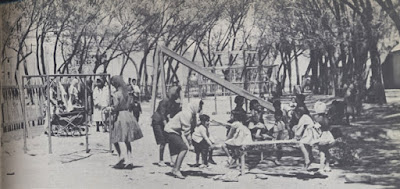BY MOHAMMAD QAYOUMI
Mohammad Qayoumi is president of California State University, East Bay. He grew up in Kabul and came to work in the United States in 1978. Since 2002 he has volunteered his time in reconstruction efforts, serving on the board of directors of the Central Bank and as senior advisor to the minister of finance.
Afghanistan once had Boy Scouts and Girl Scouts. In the 1950s and '60s, such programs were very similar to their counterparts in the United States, with students in elementary and middle schools learning about nature trails, camping, and public safety. But scouting troops disappeared entirely after the Soviet invasions in the late 1970s.
The physical campus of Kabul University, pictured here, does not look very different today. But the people do. In the 1950s and '60s, students wore Western-style clothing; young men and women interacted relatively freely. Today, women cover their heads and much of their bodies, even in Kabul. A half-century later, men and women inhabit much more separate worlds.
So, too, were record stores, bringing the rhythm and energy of the Western world to Kabul teenagers.
This movie theater was located near where I once lived, and we could even see Hollywood movies there. (I remember seeing Spartacus, The FBI Story, and The Dirty Dozen.)
Compared with the 1950s and '60s, fewer women work outside the home, and their outfits are much more conservative than what you see here.
When I was growing up, Afghanistan did have medium and light industry, such as the textile factory pictured here. There was a sense then that Afghanistan had a bright future -- its economy was growing, its industry on par with other countries in the region. Back then, most of the cotton processed in a plant like this was grown locally. But three decades of war have destroyed industry and the supply chain.
Clothing boutiques like these were a familiar feature in Kabul during my childhood.
During the annual commemoration of Afghanistan's independence, Kabul was lit up at night in late August and early September for nine evenings in the early 1960s. Now the city is dark. Even driving at night gives an eerie feeling. There are hardly any lights on; the streets are desolate, and there is no night life.
-------------------------------------------------------------------
A picture is worth a thousand words, from the pictures one can clearly see that Afghanistan use to be a pretty modern and liberal country, but look what the religious fanatics and their foreign backers have done to that poor country.
.



































